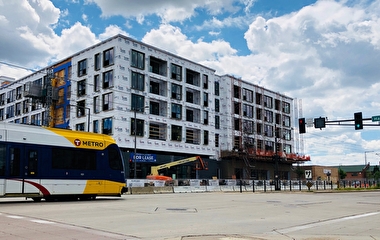Merging onto a freeway can be a stressful experience for drivers, especially when weather conditions or complex road infrastructure result in poor visibility. If a driver on an entrance ramp can’t clearly see the vehicles traveling on the freeway, it can be difficult to merge safely.
Researchers at the University of Minnesota Duluth (UMD) are investigating the use of dedicated short-range communications (DSRC) technology to make merging from freeway entrance ramps easier and safer for drivers. The team is using DSRC-based vehicle-to-vehicle (V2V) communications to collect real-time vehicle trajectories in these merging situations—a first step toward providing merge-assist information to drivers.
The project is being led by UMD electrical engineering professor M. Imran Hayee and funded by the Roadway Safety Institute.
The technology works by enabling vehicles equipped with DSRC devices to communicate important details about their location, direction of travel, and speed to each other. Using that information, the system developed by the research team calculates the relative trajectories of the vehicles in real time. Eventually, these trajectories will be used to predict the optimal time and trajectory for the vehicle attempting to merge.
“The information and technology developed in this project could pave the way for providing merge assistance to drivers on the merging ramp,” says Hayee. “It could also help facilitate automatic merging of vehicles when the DSRC market penetration reaches necessary levels.”
So far, the researchers have developed software for transmitting and receiving vehicle information using the two DSRC devices, and they are working on making the technology usable across multiple devices. They have also conducted an initial round of field tests using two DSRC-equipped vehicles on regular streets and freeways to test the system’s accuracy.
Initial results were promising, Hayee says, indicating that the system is capable of producing the lane-level accuracy needed for future implementation of this project.
Going forward, the team plans to continue refining communication protocol and to conduct additional field tests on freeways. These field tests will include at least three vehicles, allowing the researchers to test the system’s ability to collect trajectories of vehicles in multiple lanes at the same time.



